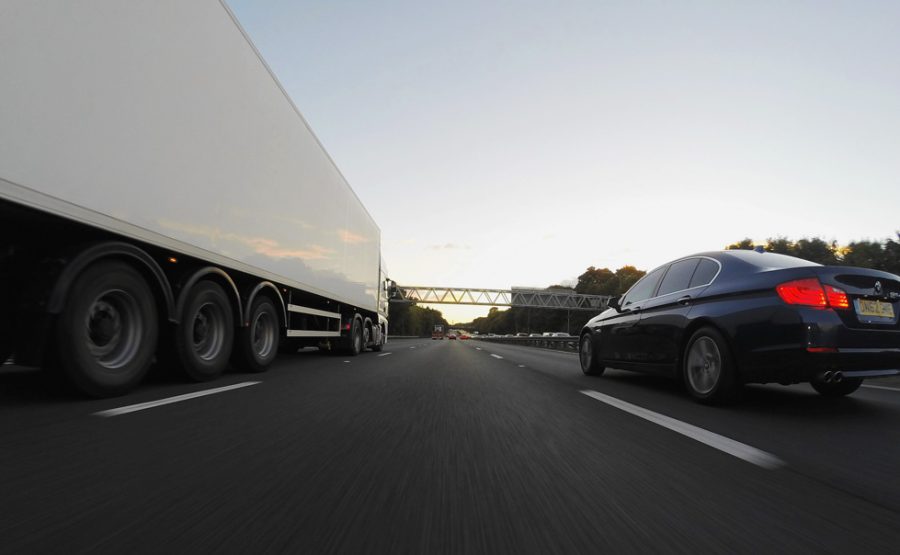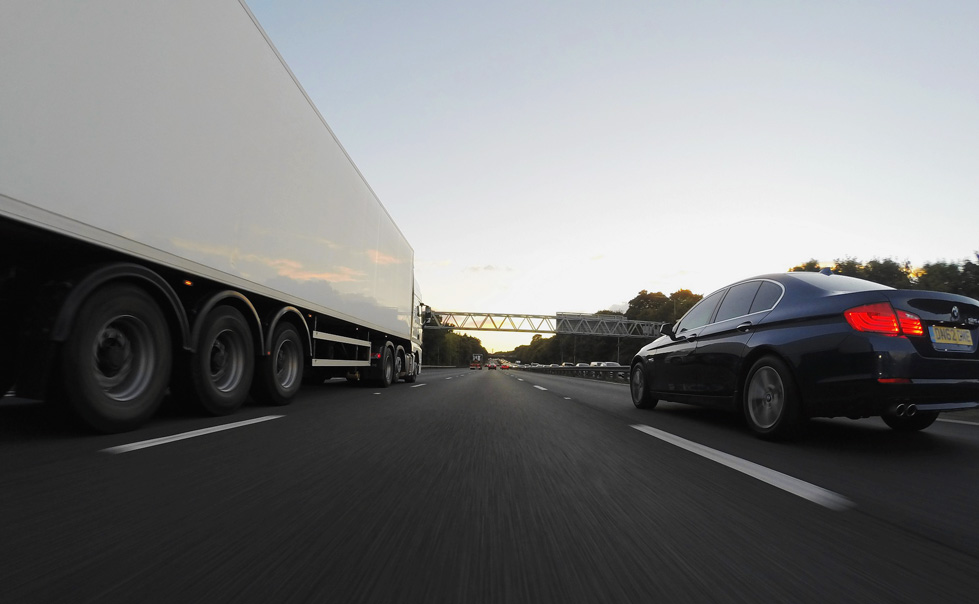Self-Driving Technology Comes to the Trucking Industry
Imagine a world where ports full of semi trucks line the on- and off-ramps onto interstates. You watch as a semi comes to a halt in the port and its driver gets out. Then the truck lurches forward onto the interstate by itself and cruises away, beginning a hundred-mile journey on its own. That world […]

June 14, 2017

Imagine a world where ports full of semi trucks line the on- and off-ramps onto interstates. You watch as a semi comes to a halt in the port and its driver gets out. Then the truck lurches forward onto the interstate by itself and cruises away, beginning a hundred-mile journey on its own.
That world may be reality soon.
Even as companies like Google and Uber rush madly to make self-driving cars available for personal use, self-driving technology may actually hit the trucking industry first. One of the biggest reasons is simple: cost.
How Semi Trucks Can Drive Themselves

Only the wealthiest Americans will likely be able to afford a top-of-the-line driverless car anytime soon. But trucking companies have purchasing power most individual citizens don’t.
New semi trucks can cost as much as $150,000, according to The New York Times. Spending an extra $30,000 to retrofit an older model with self-driving technology probably won’t break the bank.
The technology that allows semi trucks to drive themselves is similar to the methods Google and other companies are using to pilot self-driving cars. Otto, a tech start-up creating driverless trucks that was recently acquired by Uber, uses a lidar system to map out the truck’s surroundings by using pulsing lasers. Video cameras are also used. The cab contains a micro-supercomputer, a drive-by-wire box that translates the computer’s output into physical controls on the truck itself, and two big red buttons to halt any driverless activity and allow a human to take over.
Making semi trucks driverless should be easier than cars because the sensor technology can perch high on top of the cab and provide long-range views to allow the computer to anticipate any obstacles the truck may encounter.

But driverless trucks and cars alike both suffer from cameras that can be blinded by bright sunlight and can struggle to perform in snow, rain, or ice. As advanced as the technology is, it can easily confuse a large sign for another vehicle, and it’s uncertain whether it would know what to do if a construction crew tried to get it to pull over or a hitchhiker tried to flag it down for a free ride. And so far, only a human driver can adequately interpret the body language of other drivers to help them predict what those drivers may do next.
It’s unlikely at this point that companies like Google or Uber will be able to roll out completely autonomous trucks anytime soon.
In urban or rural driving, there are too many unpredictable factors to which a driverless truck would need to react correctly in order to ensure safety for everyone. Four-way stops, pedestrian crossings, a tractor slowing down traffic, construction zones narrowing down to one lane, and deer would all likely confuse a driverless truck. That’s why companies are focusing on interstates where traffic flow is much easier to predict.
Although drivers would be needed to get trucks to and from the interstate, the idea of a sort of port from which driverless trucks could launch onto the interstate and come to rest toward the end of their journey is far more plausible than creating a completely autonomous truck able to react to any random obstacle it encounters off of the interstate.
Will Driverless Trucks Hurt Truck Drivers?

Driverless trucks have already hit the road to great success.
In late 2016, Uber’s driverless semi truck successfully traveled 120 miles of Colorado interstate (with a police escort and a driver standing by to take the wheel if necessary) and delivered 50,000 cans of Budweiser to its destination.
Daimler Trucks premiered their concept for a driverless semi all the way back in 2014. In 2015, they revealed their Freightliner Inspiration Truck by having it drive itself onto the Hoover Dam.
But what about the truck drivers? Will these accomplishments in automation render their jobs obsolete?

“We don’t want to get rid of drivers,” Sven Ennerst, head of Dailmer Trucks’ development department, told Wired. “We want to make their lives more efficient and more easy.”
Because of all of the unpredictable complications that may arise in urban and rural driving, it seems likely that a driver will always have to be present in a self-driving semi truck just in case of emergencies.
But companies like Daimler and Uber maintain that drivers will still be necessary in other ways too. When they’re not driving, they can take time to catch up on paperwork or catch up on sleep so they can comply with the Hours of Service regulations while still delivering their cargo in the fastest time possible. And drivers will still be needed not only to take control if the computer encounters an obstacle it can’t react appropriately to, but also to do typical maintenance work like refilling on fuel or scraping away ice.
But the trucking industry isn’t looking to driverless trucks to replace its current drivers; it wants them to fill the jobs that are currently empty. In 2015, the industry was short around 48,000 workers. According to Wired, the American Trucking Associations estimates the industry will be short nearly a quarter of a million workers by 2022.
Will Driverless Trucks Hurt Other Drivers?

Of course, one of the biggest concerns when it comes to putting driverless vehicles of any kind on the road is the safety of other drivers and pedestrians.
Typically, the driverless semis have built-in safety features to protect others on the road. Daimler’s Freightliner Inspiration truck is built to maintain a safe following distance, stay in its own lane, and not pass slower vehicles. In case of emergency, the truck will alert the driver that he or she needs to take over with various beeps, and if the driver doesn’t respond quickly enough, the truck will come to a gradual stop.
But moral questions come into play with any driverless vehicle. One truck driver recalled to MIT Technology Review the time that a car drifted into his lane just a few hundred feet in front of him, not giving him enough time to stop. When he collided with the vehicle, he did everything in his power to keep his truck and the totaled car now attached to his front axle from colliding with anyone else.
Eventually, he got his truck to come to a stop without running into anyone else, but the driver of the car that had collided with him had been killed.

In that scenario, the driver of the car was at fault, and there was nothing the truck driver could do to avoid the collision. But would a self-driving semi truck attempt to veer into another lane, possibly injuring others? If it didn’t swerve and simply hit the car drifting into its lane, would a driverless car be able to prove that it wasn’t at fault and that there was no other course of action it could take to avoid a collision?
What if the driverless truck malfunctioned and caused an accident? Who would be responsible for the injuries and damage it caused?
These are the moral questions that plague the self-driving car and truck industries. Statistics seem to be on their side that autonomous vehicles would actually decrease the number of accidents. According to Wired, around 400,000 truck accidents occur each year, killing roughly 4,000 people, and in almost every case, human error caused the accident.
But for the accidents that do occur, driverless truck companies will need to develop specific procedures to help determine fault and cover other drivers’ injuries and damages if their driverless truck causes an accident.
Help from an Indiana Truck Accident Attorney
Although driverless trucks have yet to enter the mainstream, semi trucks driven by humans today still get into terrible accidents. Because of the size of semi trucks, their accidents tend to result in more severe injuries for both parties involved in the accident. Whether you’re a semi truck driver or the driver of a car, if you were involved in an accident through no fault of your own, Hensley Legal Group may be able to help. You may be entitled to compensation to cover your injuries and other damages. Call today or contact us online to schedule a free consultation.